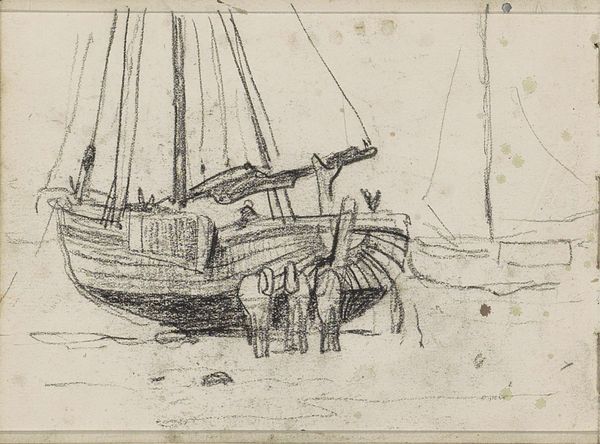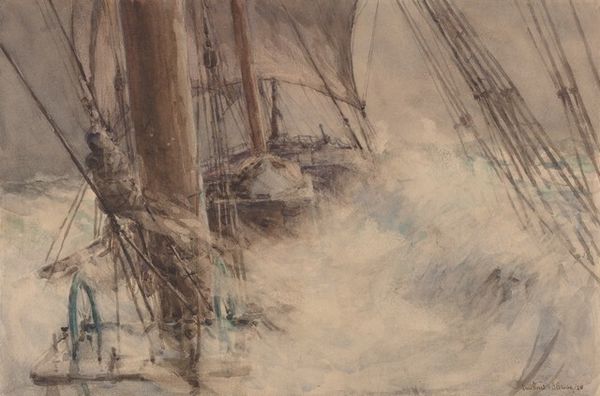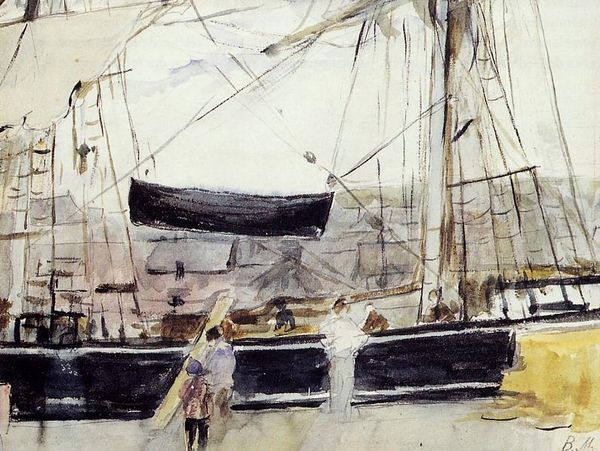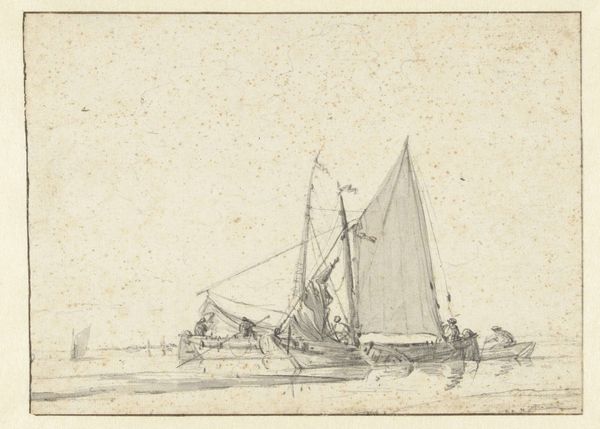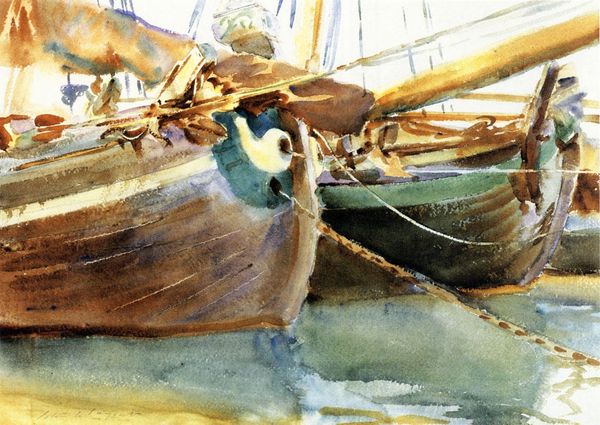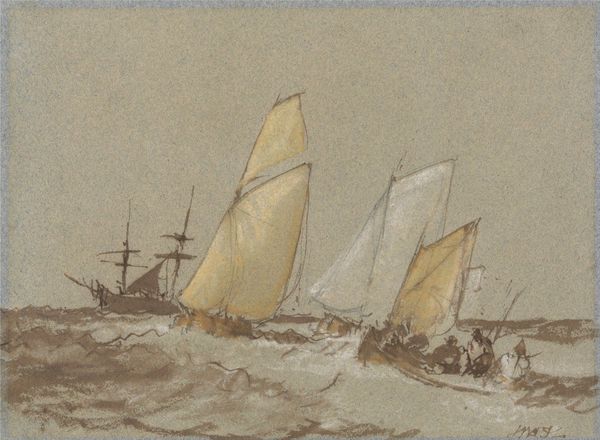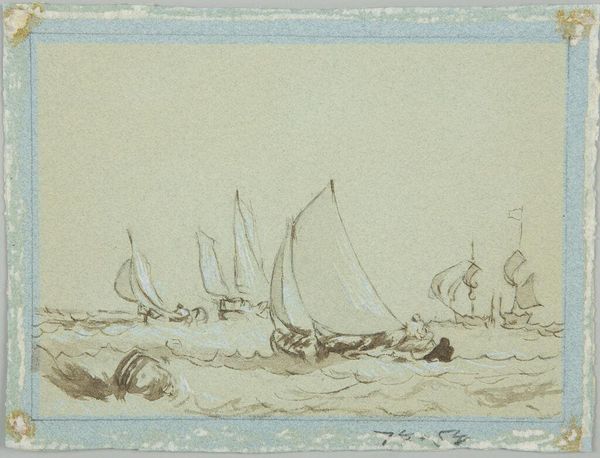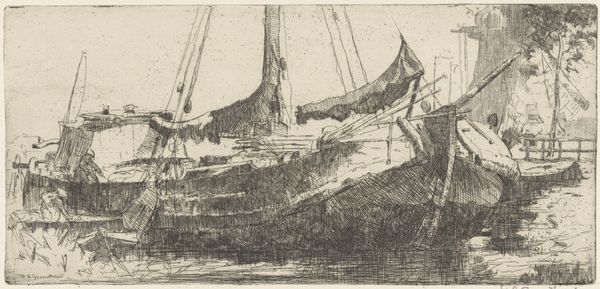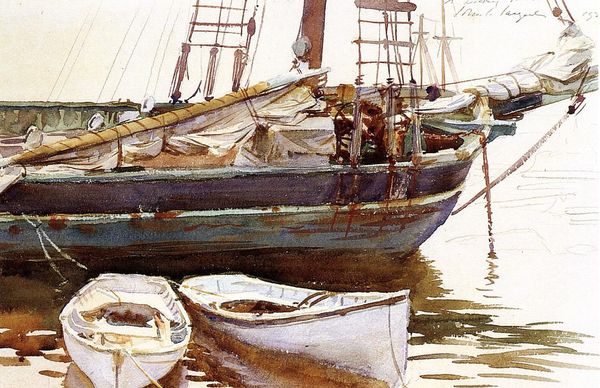
plein-air, watercolor
#
boat
#
impressionism
#
plein-air
#
landscape
#
impressionist landscape
#
possibly oil pastel
#
oil painting
#
watercolor
#
water
#
watercolor
Copyright: Public domain
Curator: Here we have Eugène Boudin's "Seascape," an evocative rendering of boats at sea. It seems to be an example of plein-air painting. Editor: The immediacy is palpable; it feels more like a fleeting impression caught in sepia tones than a highly polished work. There's a sense of rawness in its monochromatic simplicity. Curator: Yes, the dominance of earth tones adds to the impression that this is from an earlier era, it suggests the aesthetic values of the Barbizon School, an important stylistic touchstone in Boudin's journey toward Impressionism. Do you find a melancholic tone as well? Editor: Absolutely, the material handling definitely amplifies that feeling. It's almost like looking at an old photograph where the light has faded, yet the boats—symbols of passage— endure against the watery expanse. One can sense their weight and form against the watercolor’s ethereal touch. I wonder, would he have chosen to paint such subject matters with novel, man-made pigments? Curator: Possibly! The boats carry so much historical symbolism, they’re vessels of trade, war, exploration, but perhaps more importantly, of individual human destiny—painted with a sense of nostalgic impermanence. Boudin saw beauty not just in the finished product but in capturing that transitory experience. Editor: The choice of medium reinforces that sense of impermanence. Watercolors, often associated with studies or sketches, signal process, not finality. What this artwork signifies to me is an investigation of the very substance from which these boats originated, their means of navigation across great waters, and more figuratively the materialization of memory itself. Curator: Indeed, this "Seascape" distills movement and memory and perhaps evokes an implicit longing. The composition allows for our contemplation as the viewer. It also demonstrates an ability to capture light, the signature focus of Impressionism that would follow soon after. Editor: In looking so intently, one begins to wonder if it were ever the artist's desire to present such a private material endeavor so publicly; the sepia wash alludes to a temporal paradox that now, as an historical object, is ripe for an ever-renewing set of perspectives.
Comments
No comments
Be the first to comment and join the conversation on the ultimate creative platform.

